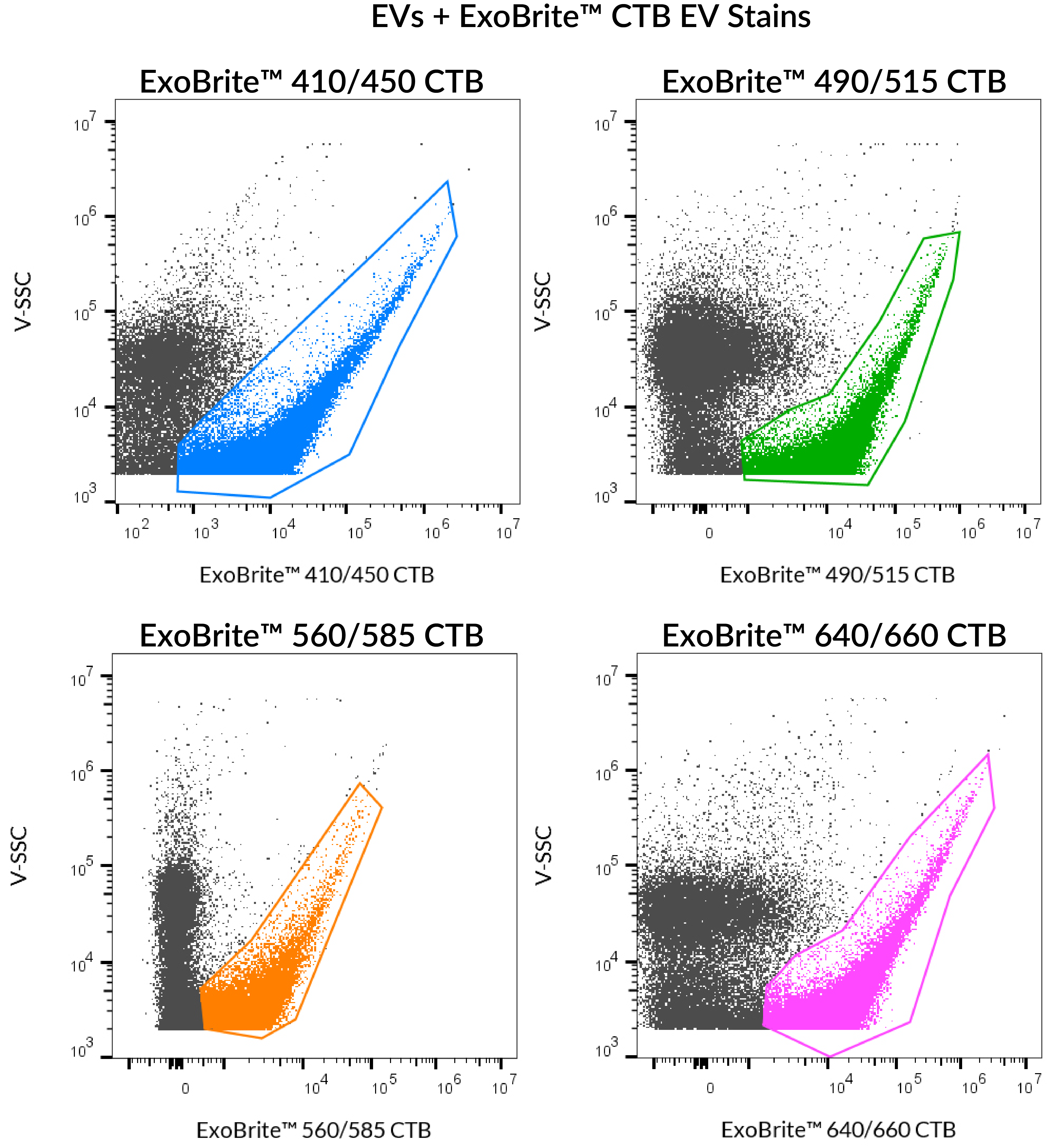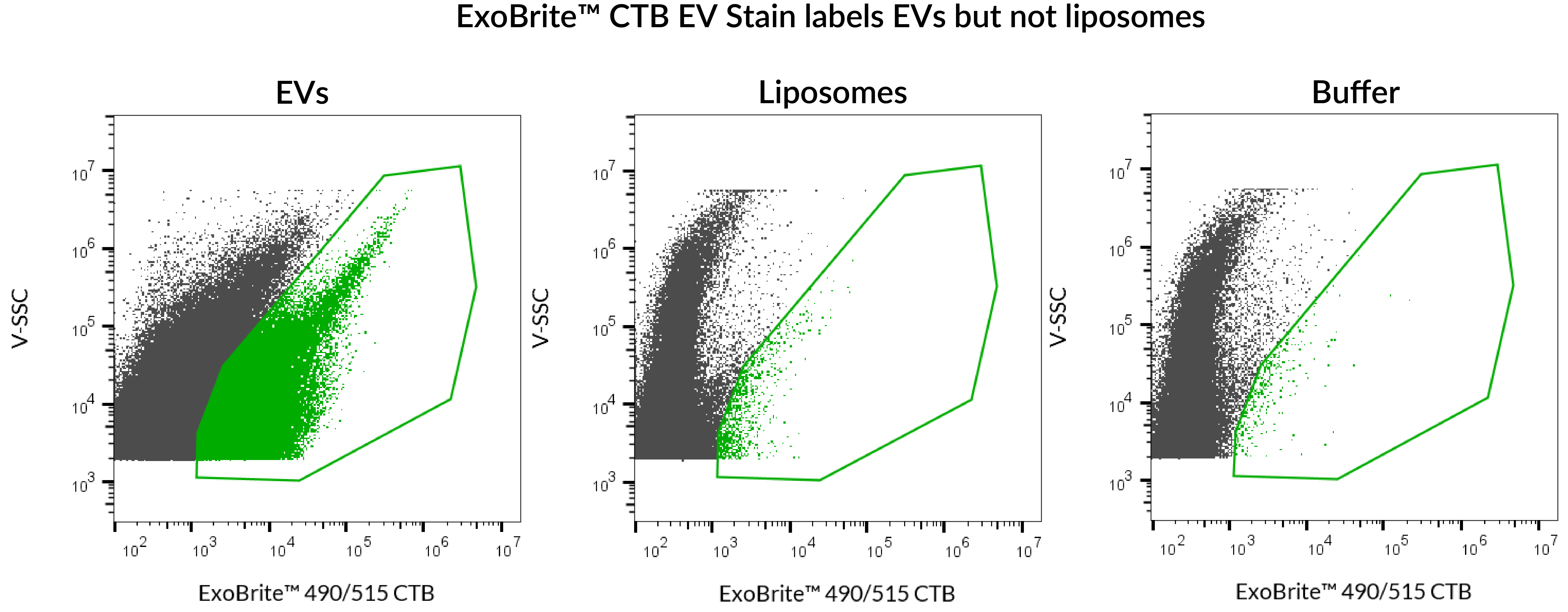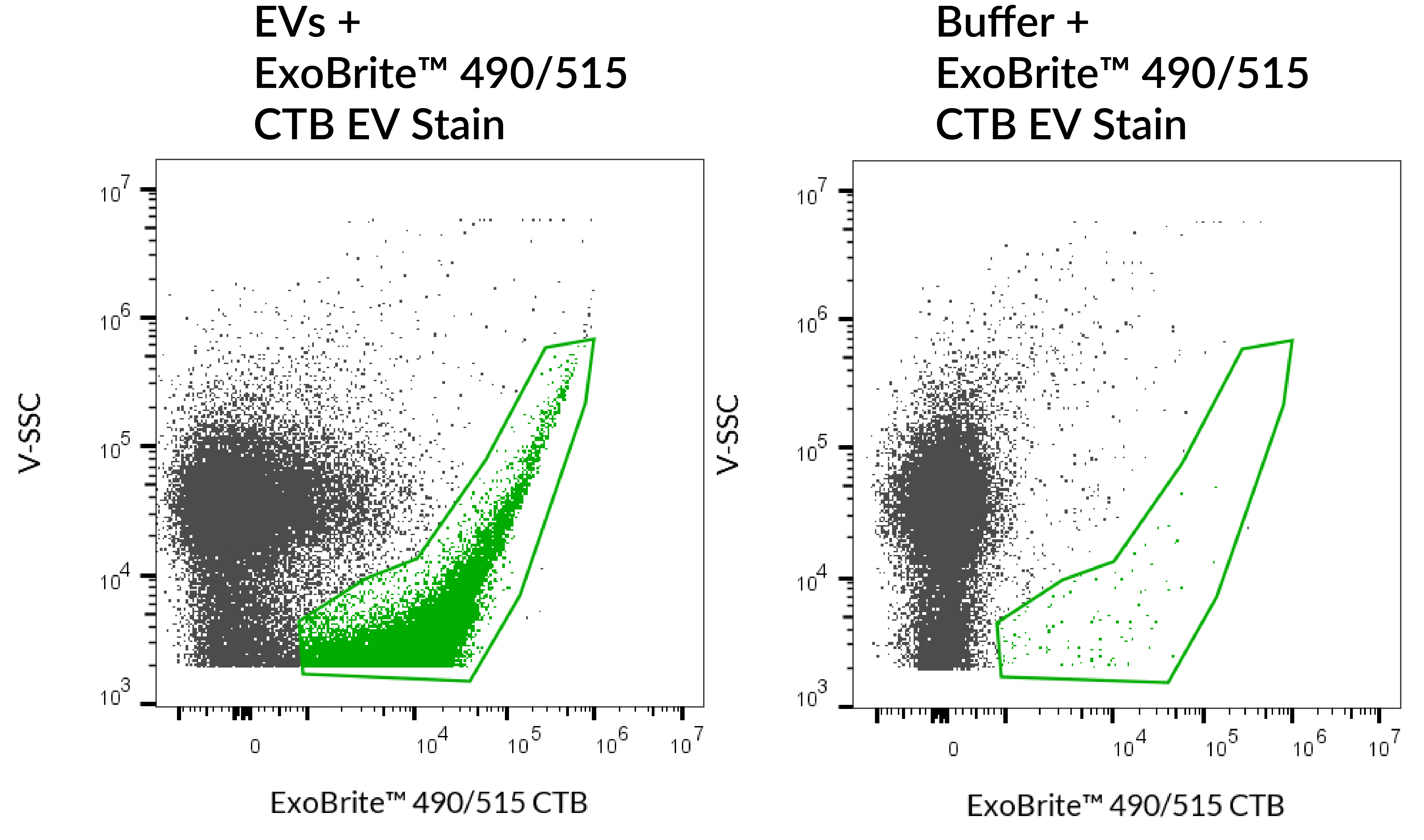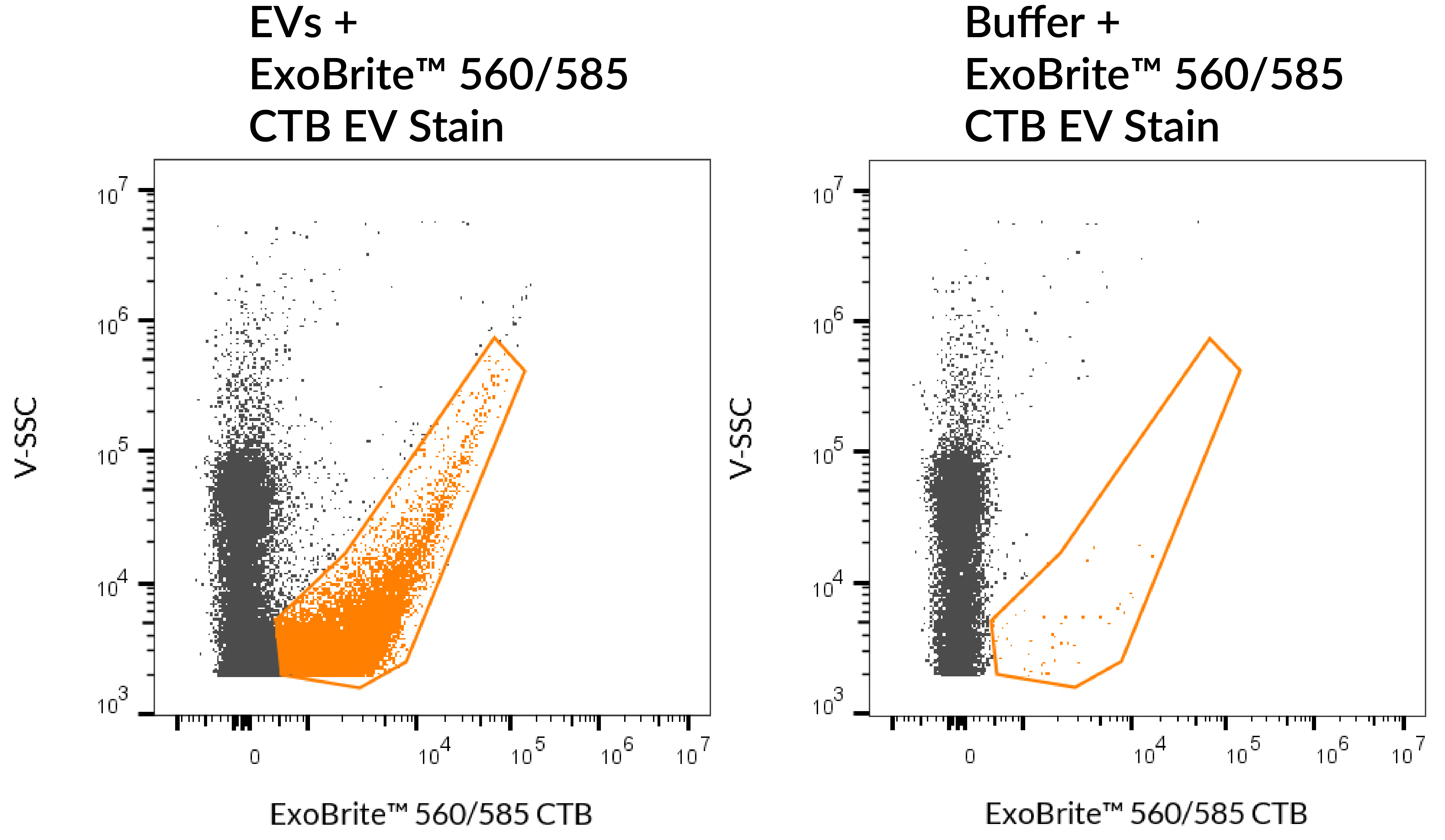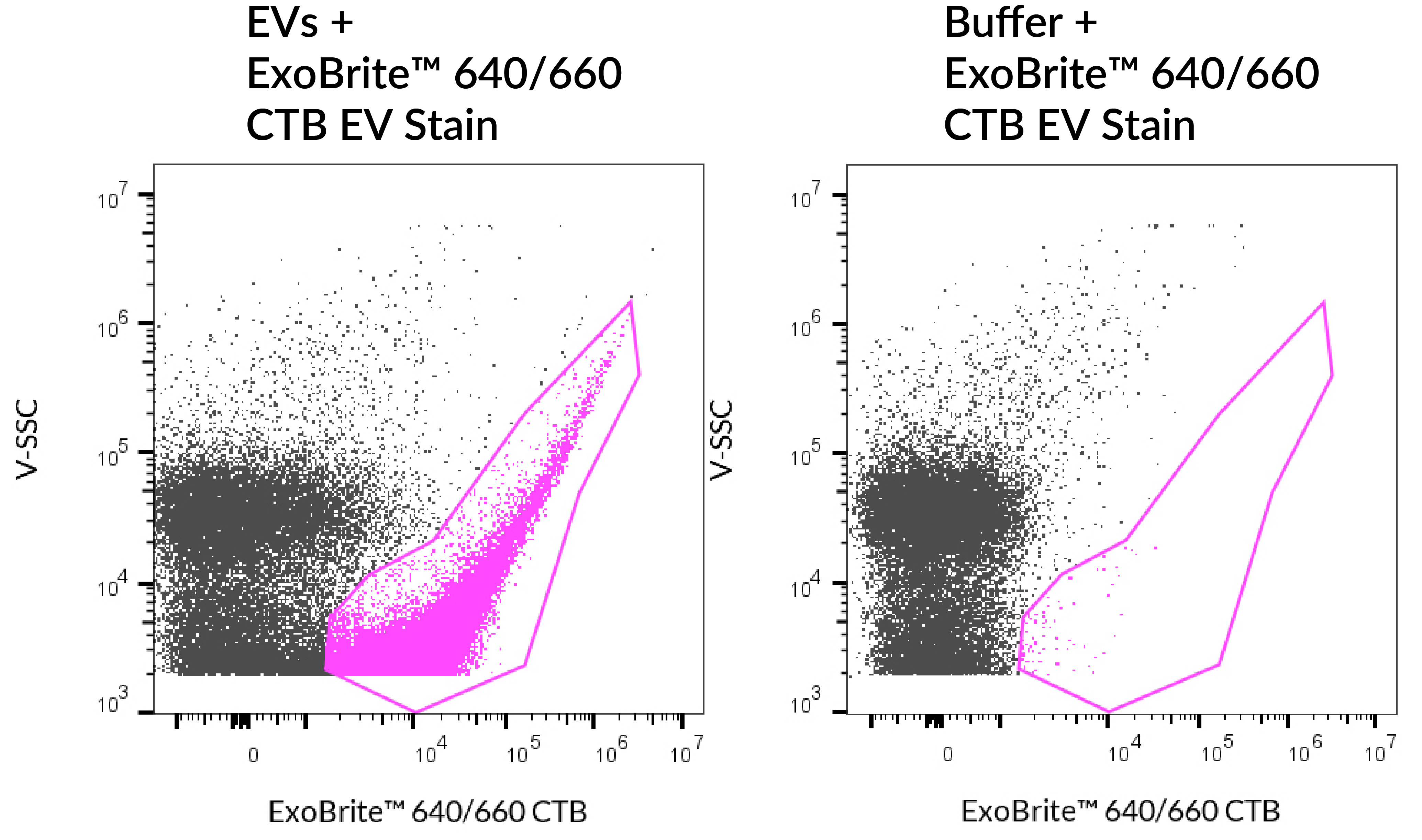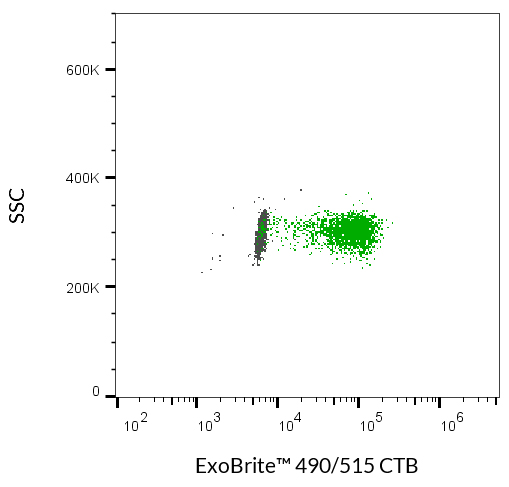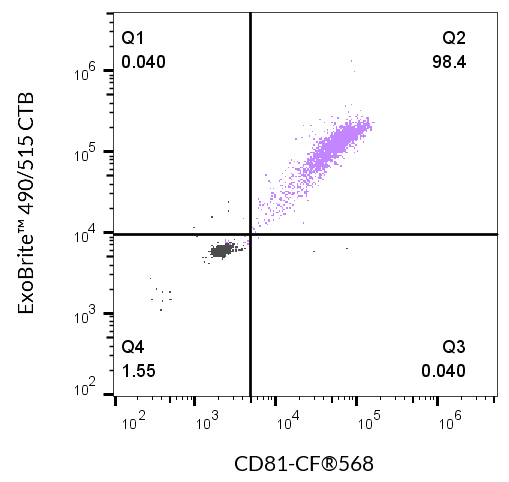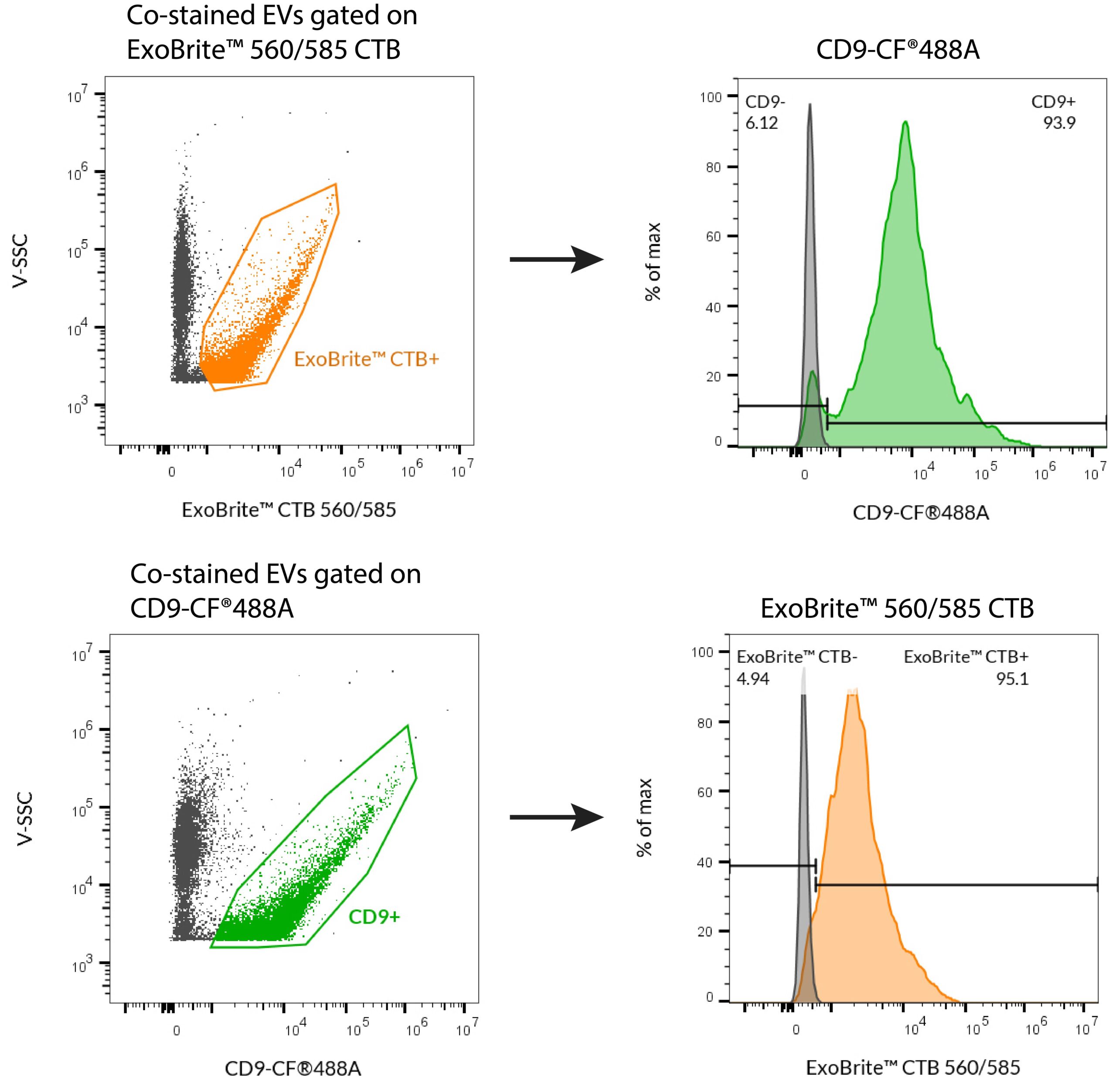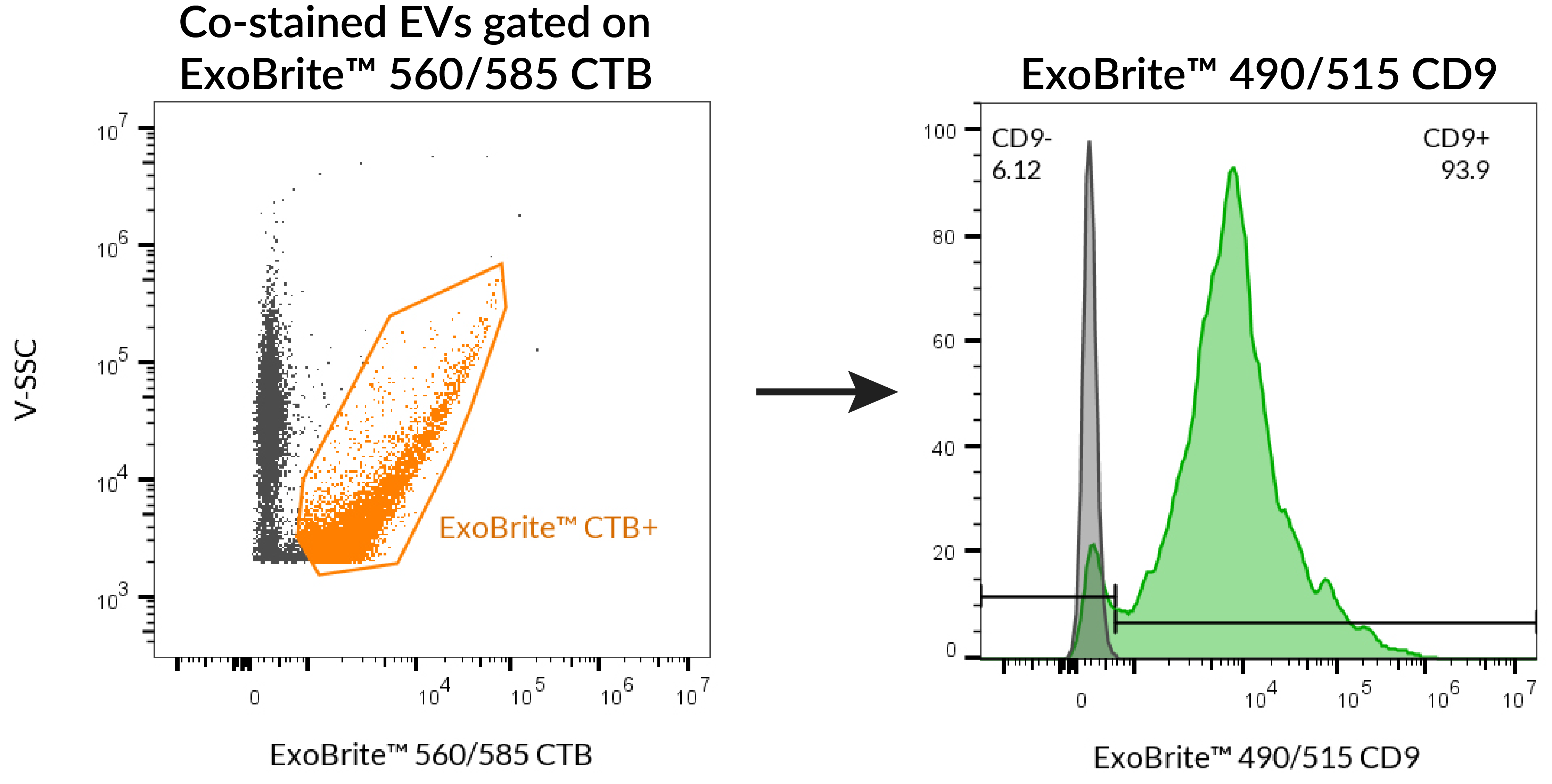ExoBrite™ CTB EV Staining Kits
Fluorescent cholera toxin subunit B (CTB) conjugates that are optimized for bright and clean staining of extracellular vesicles for flow cytometry.
Please fill in the inquiry form and we will contact you shortly.
Wishlist updated! View wishlist
Product Description
ExoBrite™ CTB EV Staining Kits were designed to overcome some of the challenges of EV detection, particularly in flow cytometry. ExoBrite™ CTB EV Stains bind to molecules in the EV membrane for bright, specific staining, with little to no background.
Features
- Optimally formulated CTB conjugates for staining EVs
- Designed for detection by flow cytometry
- Bright signal and low background
- Stain purified or bead-bound EVs
- Compatible with antibody co-staining
- Available in 4 colors
Kit Components
- ExoBrite™ CTB EV Stain
- ExoBrite™ Reconstitution Solution
- 1 vial of stain makes 100 uL of 500X staining solution
Note: The name of this product has been revised from ExoBrite™ EV Membrane Staining Kits.
ExoBrite™ CTB EV Stains are optimally formulated fluorescent conjugates of cholera toxin subunit B (CTB), which binds to GM1 gangliosides that are commonly found on the surface of mammalian lipid rafts and EVs. The stains were designed to overcome some of the challenges of EV detection, particularly in flow cytometry. Some dyes used to stain EVs can form aggregates of a similar size as exosomes or EVs, thus confounding analysis. ExoBrite™ CTB EV Stains, however, were formulated to show little to no aggregation in flow cytometry, allowing EVs to be identified with bright and specific staining. Unlike hydrophobic membrane dyes, ExoBrite™ CTB EV Stains do not bind non-specifically to polystyrene beads, meaning that they can be used to stain bead-bound EVs.
EVs are often labeled with fluorescent antibodies targeting one or more of the tetraspanin proteins CD9, CD63, and CD81. ExoBrite™ CTB staining can be combined with antibody staining, for multi-parameter analysis.
Less background and better coverage over other EV stains
ExoBrite™ CTB EV Stains were designed to offer exceptional signal:noise and more complete coverage of purified and bead-bound EVs. In the figure below, lipophilic dye DiO and plasma membrane stain CellMask™ demonstrate an unacceptable amount of dye aggregation in gated EVs. Other EV stains such as ExoFlow-ONE™ and ExoGlow™ have less coverage of EVs when compared to ExoBrite™ CTB EV Stains.

Notes:
- ExoBrite™ CTB EV Stains have been found to label EVs derived from several tested cell lines (see Validated EV Sources below), but may not stain EVs from every source.
- In our testing, we have found that ExoBrite™ 490/515 dye may bind to streptavidin coated surfaces or beads if free biotin binding sites are not blocked. We recommend performing a biotin blocking step after binding your biotinylated capture antibody to streptavidin beads or surfaces when using ExoBrite™ 490/515 conjugates. Alternatively, consider using a different ExoBrite™ dye for staining EVs captured on streptavidin beads or surfaces.
ExoBrite™ CTB EV Staining Kits
| Product | Ex/Em | Detection channels | Size | Catalog Number |
|---|---|---|---|---|
| ExoBrite™ 410/450 CTB EV Staining Kit | 416/452 nm | Pacific Blue™ | 100 Labelings | 30111-T |
| 500 Labelings | 30111 | |||
| ExoBrite™ 490/515 CTB EV Staining Kit | 490/516 nm | FITC | 100 Labelings | 30112-T |
| 500 Labelings | 30112 | |||
| ExoBrite™ 560/585 CTB EV Staining Kit | 562/584 nm | PE, Cy®3 | 100 Labelings | 30113-T |
| 500 Labelings | 30113 | |||
| ExoBrite™ 640/660 CTB EV Staining Kit | 642/663 nm | APC | 100 Labelings | 30114-T |
| 500 Labelings | 30114 |
Validated EV Sources for ExoBrite™ EV Surface Stains
| EV Source | ExoBrite™ True EV Membrane Stains | ExoBrite™ CTB Stains | ExoBrite™ WGA Stains | ExoBrite™ Annexin Stains |
|---|---|---|---|---|
| A549 cells | Yes | Yes | Yes | Yes |
| CHO cells | Yes | No | Yes | Yes |
| hASC (human adipose stem cells) | ND | No1 | ND | ND |
| HEK293T cells | ND | Yes1 | ND | ND |
| HeLa cells | Yes | No | Yes | Yes |
| HUVEC (human umbilical vein endothelial cells) | ND | No1 | ND | ND |
| J774 cells | Yes | Yes | Yes | Yes |
| Jurkat cells | Yes | Yes | Yes | Yes |
| MCF-7 cells | Yes | Yes | Yes | Yes |
| Plasma | ND | No | ND | Yes |
| Raji cells | ND | Yes | Yes | Yes |
| RAW 264.7 | Yes | ND | ND | ND |
| Serum | ND | No | ND | Yes |
| Skeletal myoblasts | ND | Yes1 | ND | ND |
| THP-1 | Yes | ND | ND | ND |
| U2OS cells | Yes | No | Yes | Yes |
| U937 cells | Yes | No | Yes | Yes |
Value of “Yes” or “No” indicates coverage of EVs based on Biotium’s internal data or customer-reported data. Value of “ND” indicates no data.
Biotium also offers other validated ExoBrite™ reagents for flow cytometry, western blotting, or super-resolution imaging.
Learn about Biotium’s new ExoBrite™ True EV Membrane Stains. These genuine lipophilic membrane dyes are designed for superior pan-EV labeling over other membrane dyes including PKH, DiO, DiI, and DiD.
Biotium also offers ExoBrite™ WGA EV Stains (wheat germ agglutinin) and ExoBrite™ Annexin EV Stains optimized for bright and sensitive staining of EVs. The ExoBrite™ EV Surface Stain Sampler Kit contains each of Biotium’s ExoBrite™ EV Surface Stains (CTB, WGA, and Annexin V) for assessing which stain offers the best coverage for the EV samples of interest. Biotium also carries an ExoBrite™ EV Stain Enhancer solution that improves the staining specificity of EV stains such as Annexin V and certain lectins.
Biotium also offers ExoBrite™ Antibody Conjugates for optimal detection of CD9, CD63, and CD81 EV markers by flow cytometry and western blotting. For super-resolution imaging by STORM, learn about our ExoBrite™ STORM CTB EV Staining Kits available in four CF® Dyes validated for STORM.


